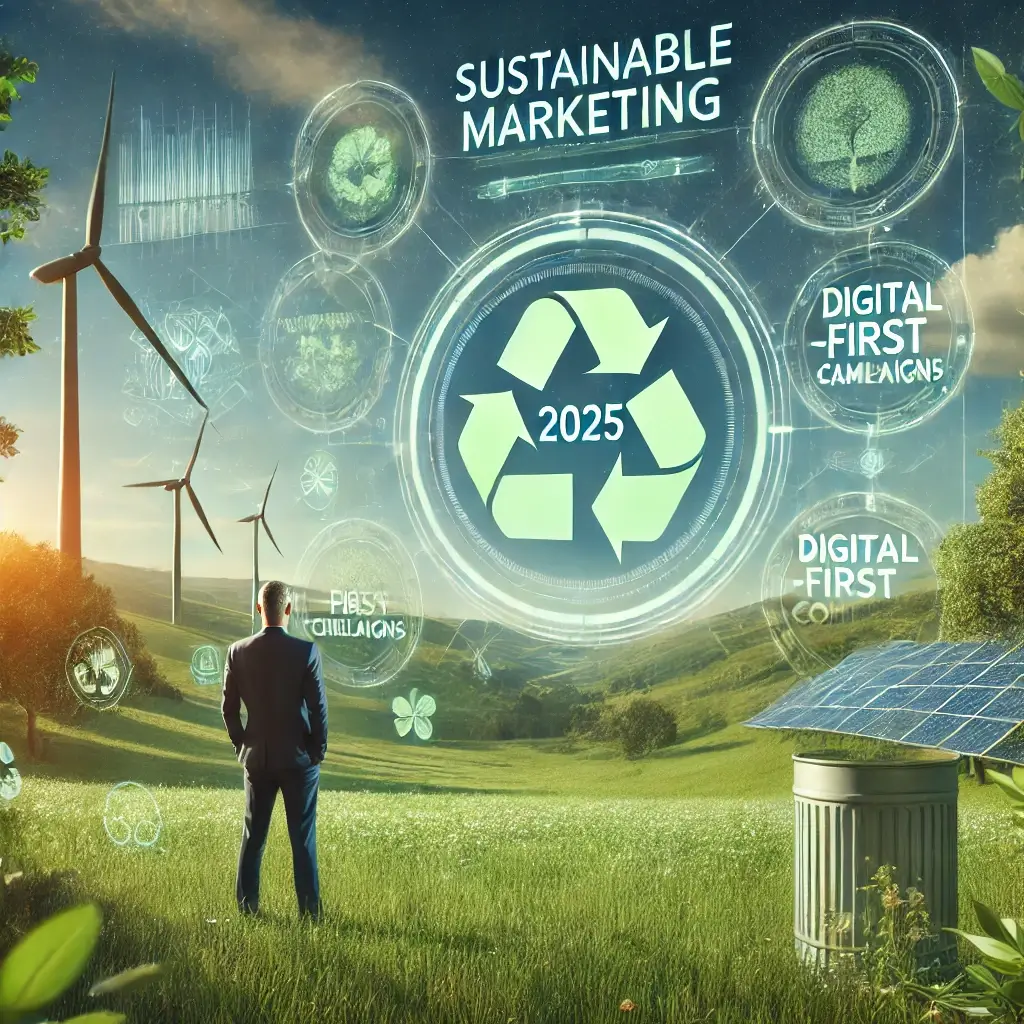Sustainability has become a defining aspect of consumer and corporate behavior in 2025. Today, environmental consciousness is not just a trend; it is a global imperative. A report from Nielsen (2024) reveals that 90% of consumers expect businesses to take active roles in solving environmental challenges. This shift calls for businesses of all sizes to embrace sustainable marketing practices that align with customer values.
Sustainability as a Business Imperative: How Eco-Conscious Marketing Increases Sales by 20%

What does sustainable marketing mean for the average consumer? It goes beyond promoting green products to creating a holistic approach that prioritizes environmental and social responsibility at every stage. From product design to advertising and customer engagement, sustainability has become a lens through which businesses build trust and foster loyalty. This article breaks down how sustainable marketing strategies resonate with audiences and make an impact on the planet.
Practical Steps Toward Sustainable Marketing
Educating Customers About Sustainability
Transparency is key. Sharing the steps your business is taking to reduce its environmental footprint builds trust with your audience. Informative blogs, videos, and social media posts can bridge the gap between your brand and your consumers.
Example: A footwear company introduced an online calculator showing the carbon footprint of each product. This not only educated customers but also increased online sales by 20% (Statista, 2024). By offering actionable insights into buying decisions, the brand empowered customers to make informed choices, solidifying trust and loyalty.
Recycling Initiatives to Drive Engagement
Incentivize customers to participate in recycling programs by offering discounts or rewards. This aligns with consumer values while reducing environmental waste.
Case Study: A tech company’s recycling drive encouraged customers to return used devices. In its first year, the initiative diverted over 10,000 items from landfills, earning widespread positive media coverage (Circular Economy Journal, 2023). Recycling initiatives that reduce waste not only reduce waste but also build a reputation for innovation and responsibility, inspiring other brands to follow suit.
Collaborative Campaigns with Environmental Organizations
Partnering with non-profits or advocacy groups can amplify your sustainability efforts while demonstrating your commitment to meaningful change.
Example: A beverage brand worked with a global clean water organization to fund wells in underserved regions. This partnership generated 15% more media impressions than previous campaigns (Forbes, 2023). Collaborations with global clean water organizations help businesses tap into larger networks of environmentally conscious consumers, extending their influence and credibility.
Using Digital-First Campaigns to Minimize Waste
Digital campaigns are more eco-friendly compared to traditional print media. They offer scalability and allow businesses to measure their impact more effectively.
Example: A cosmetics brand transitioned to digital advertising and saw a 25% rise in website traffic while reducing paper waste by 50% (Tech for Sustainability, 2024). Digital-first campaigns that reduce paper waste also enable brands to engage directly with their audience through personalized and interactive formats, making them highly effective.
Highlighting Sustainable Sourcing and Production
Communicate your brand’s commitment to sustainable practices in sourcing and manufacturing. Authentic storytelling around sustainable efforts resonates deeply with environmentally conscious consumers.
Example: A chocolate brand shared the story of their ethically sourced cocoa through a YouTube series. This campaign increased brand awareness by 30% and drove customer engagement. Such transparency reassures customers that their purchases contribute to ethical and sustainable causes.
The Role of Consumers in Driving Change
Businesses aren’t the only ones with a role to play in sustainable marketing. Consumers wield significant power by choosing brands that align with their values. Advocacy and conscious spending can push companies to adopt better practices. Supporting businesses that prioritize sustainability sends a clear message: environmental responsibility is non-negotiable. For instance, consumer-driven campaigns on social media have prompted major corporations to adopt greener policies, showcasing the collective power of individuals.
Conclusion
Sustainable marketing in 2025 represents a partnership between businesses and consumers. It’s about creating a future where profitability and environmental responsibility coexist. By educating customers about environmental initiatives, launching recycling initiatives, collaborating with non-profits, and emphasizing eco-friendly practices, businesses can lead the way in addressing global challenges. Whether you’re a business leader or a consumer, the choices you make today shape the world of tomorrow. Sustainability is no longer just an option; it’s an expectation. Join the movement for a sustainable future and inspire others to do the same.
References
Nielsen. “Sustainability in Consumer Behavior: Key Insights for 2024.” Published 2024. [Link]
Statista. “The Impact of Carbon Transparency on Consumer Behavior.” Published 2024. [Link]
Circular Economy Journal. “Recycling Initiatives and Consumer Engagement.” Published 2023. [Link]
Forbes. “Sustainable Partnerships: Brands and Advocacy Groups.” Published 2023. [Link]
Tech for Sustainability. “Digital Advertising and Environmental Impact.” Published 2024. [Link]

Dominic E. is a passionate filmmaker navigating the exciting intersection of art and science. By day, he delves into the complexities of the human body as a full-time medical writer, meticulously translating intricate medical concepts into accessible and engaging narratives. By night, he explores the boundless realm of cinematic storytelling, crafting narratives that evoke emotion and challenge perspectives.
Film Student and Full-time Medical Writer for ContentVendor.com